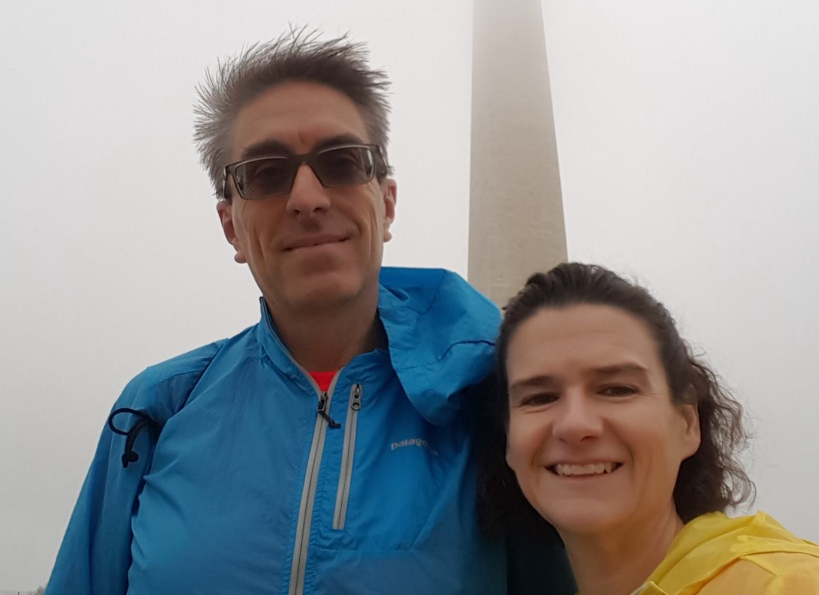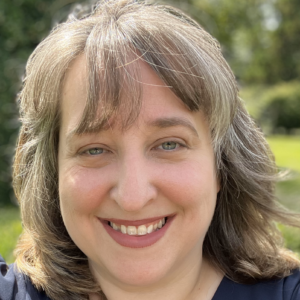
“Up until the dissection, I had no idea.”
Chris Underwood’s mom had died of something called an aortic dissection. But she was 82 at the time, and in terms of his own risk, “We didn’t give it much thought.”
In July 2019, Chris’s life changed. “I was at work getting ready for a meeting, felt an odd sensation in my back and chest. It didn’t feel too bad. Felt like a muscle cramp. I noticed it really never went away, and I couldn’t get it to loosen up,” said Chris.
“My boss came by and said I didn’t look very good. He called for medical people. I wasn’t really in distress, but they decided they would take me to the local hospital for further evaluation,” said Chris.
When a doctor heard about Chris’s family history, he ordered a CT scan. Then he told Chris, “You have the same thing that killed your mother,” according to Chris.
Chris doesn’t remember much beyond that point. He was experiencing a Type A and Type B aortic dissection. He was life-flighted to Albany Medical Center in NY from his regional hospital.
“I remember calling my wife telling her I was going to do the surgery.”
For the next three weeks, Chris was mainly unconscious. Surgery had saved his life and restored blood flow to his vital organs. However, Chris experienced a complication related to heparin and had blood clots in his feet. That led to bilateral metatarsal amputation in November 2019.
A VEDS Diagnosis
Amid the challenges Chris was facing, his doctors noted that he was “too young and too healthy to have an aortic dissection” and told him “we think there’s something else going on.” A gene panel was run. In January 2020, Chris learned that Vascular Ehlers-Danlos syndrome (VEDS) was the cause of his dissection, and likely his mother’s as well.
“I had never even heard of this condition,” said Chris. I didn’t know what it was.” Chris initially learned more from a Google search and ultimately met with a geneticist to better understand VEDS.
Chris became disheartened when he found a factoid that said the average lifespan for VEDS was 48 years old [editor’s note: Individual longevity around any genetic aortic and vascular condition varies from person to person and is dependent upon a multitude of factors including early or late diagnosis and medical monitoring, and generally should not be reduced to an average].
“I was 52 when this happened to me, and that kind of hit me like a ton of bricks. I wondered, ‘Did I go through all this just to die again soon?’ But it was also good to know that I had a cause and a reason,” for the dissection, said Chris.
Recovery included learning to walk again as a double amputee. But, Chris was able to recover and return to work full-time. “I’m very thankful to be alive and still working,” said Chris.
A Continuing Story
Chris was generally healthy prior to his dissection and had run a ½ marathon six weeks before the event.
“My life has changed…it’s slowed me down some. But, I’ve been trying to do what I can to get stronger every day. I’m in a medical study to study physical activity in aortic dissection survivors,” said Chris who is hoping it will help the medical community help more people with aortic dissection live healthier lives – and hoping there will be crossover to helping the VEDS community overall.
Chris encourages everyone to review their family history and do all they can to better understand their risk.
“If I was king and I could make it happen, I’d have everyone [genetically] tested when they were born for proper lifelong management,” of genetic aortic and vascular conditions said Chris – who acknowledges the numerous practical challenges to that wish.
“I would definitely encourage anyone that has a family history to have themselves checked out and tested,” said Chris.
Fast Action & The Right Questions Saved Chris’s Life
Chris is very thankful that first responders took him to a hospital even though he didn’t think he was gravely ill because they felt “something didn’t add up.” He credits doctors who knew the signs of aortic dissection. “Everything worked for me like it was supposed to,” with doctors recognizing “this was not a heart attack,” said Chris.
“For most human beings, your aorta doesn’t just come apart on its own for no reason,” said Chris. “Those crucial first few minutes were really what saved my life. Thankfully the doctor thought to ask those other questions about family history,” said Chris. Citing a common saying in our communities, Chris reinforced “When you hear hoofbeats, look for the zebra.”
He also said that his personal belief is that anyone who feels they might be experiencing a dissection ask medical personnel attending to them in an emergency setting to see if their blood pressure differs in right arm and left – a potential sign of dissection. “It only takes a minute.”
A Positive Outlook
Chris wants to remind people that optimism is possible after dissection and a genetic aortic and vascular condition diagnosis. “It will get better. It looks pretty bleak, especially in the beginning,” said Chris. He has day-to-day struggles with having his wife “snow plow, mow the lawn, lift heavy boxes,” and can’t help worrying about perception around an in some ways invisible condition. “If I do that stuff, it could kill me. But I have husband guilt” and concerns people will think “I’m healthy just by looking at me,” said Chris.
Amid those sorts of challenges, Chris is grateful for the VEDS Movement. “When I was first diagnosed, the VEDS Movement was just barely 5 years old. They had just made themselves available for information. They have been a wealth of information, and it was good to see here’s a concentrated source of information,” said Chris.
Having recently moved to Virginia, Chris credits nurse Jan Lynch who works at the Foundation’s Help & Resource Center with helping him set up care at the University of Virginia that he feels will sustain him.
“The group at UVA is really what I need now that I’ve moved on past the dissection and I’m just trying to live life. They are the people that will play into that,” said Chris.
Despite the harder moments, Chris stays positive. “I honestly do believe that tomorrow will be better. Five years out, things are pretty much back to normal, just not quite the same.”
For media inquiries, please contact April Dawn Shinske at mailto:brandcomms@marfan.org

April Dawn Shinske is the Chief Communications and Marketing Officer for The Marfan Foundation. She is proud to lead a stellar integrated marketing and communications team and honored to help tell the amazing stories of our community members.
